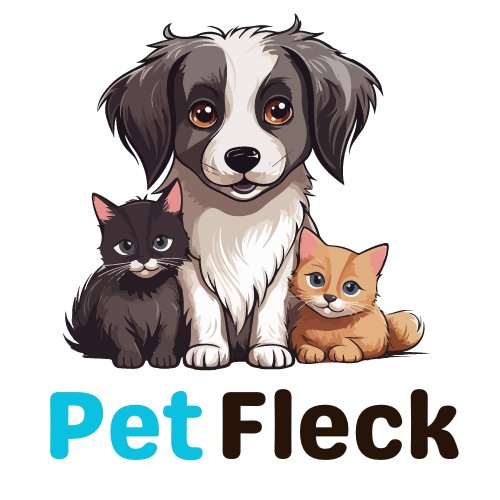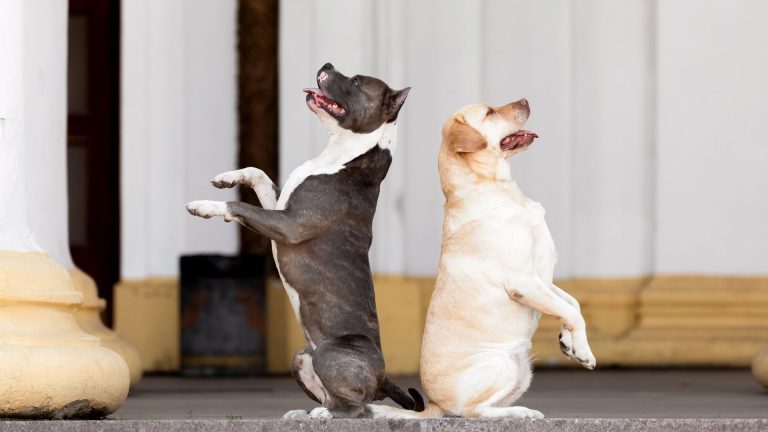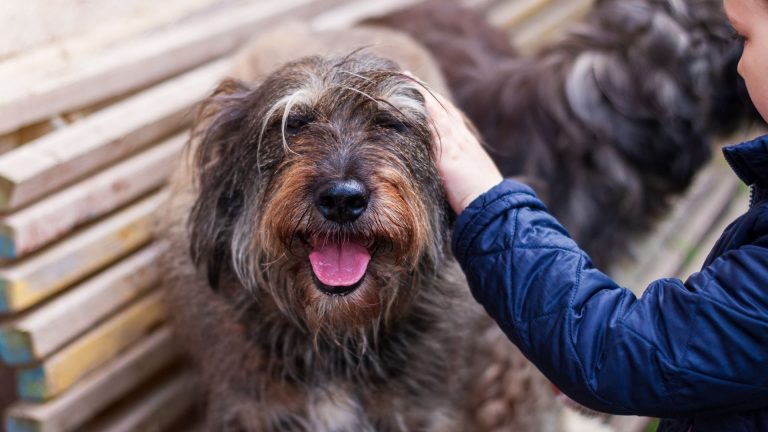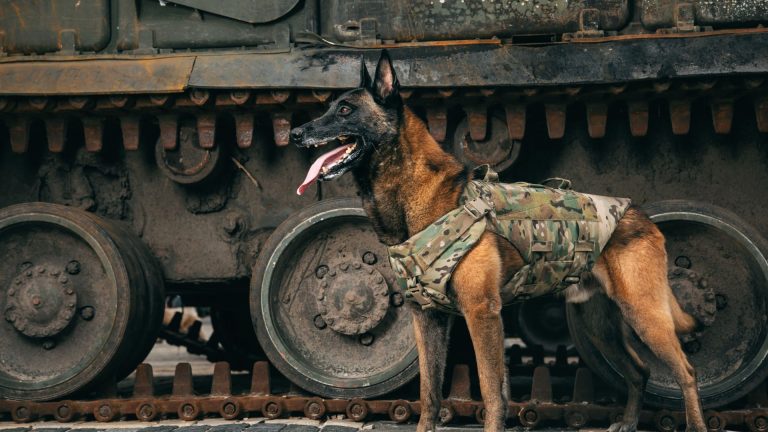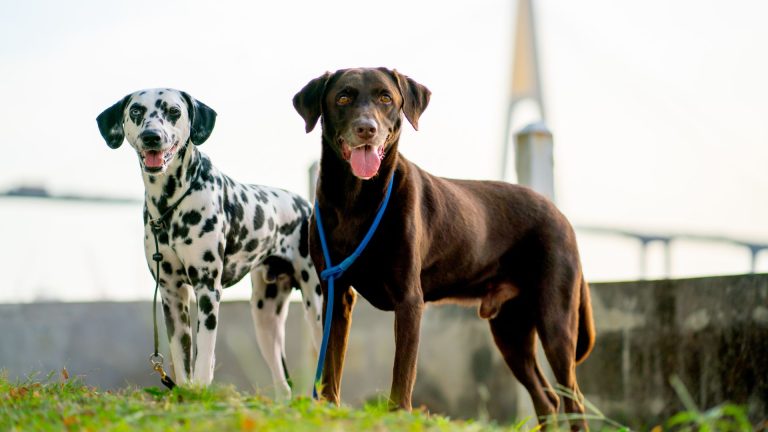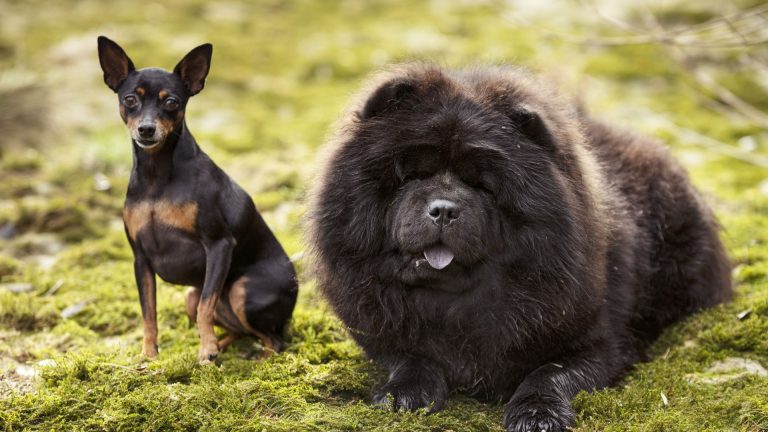
Contents
Black and brown dog breeds are striking and diverse. Their unique color combinations add to their charm. These breeds come in various sizes and temperaments. They fit well with different lifestyles.
Understanding these breeds is crucial for potential dog owners. Each breed has specific needs and characteristics. Knowing these helps in making informed decisions. This ensures a happy and healthy relationship with your pet. Choosing the right breed can make all the difference. Let’s explore the best black and brown dog breeds together.
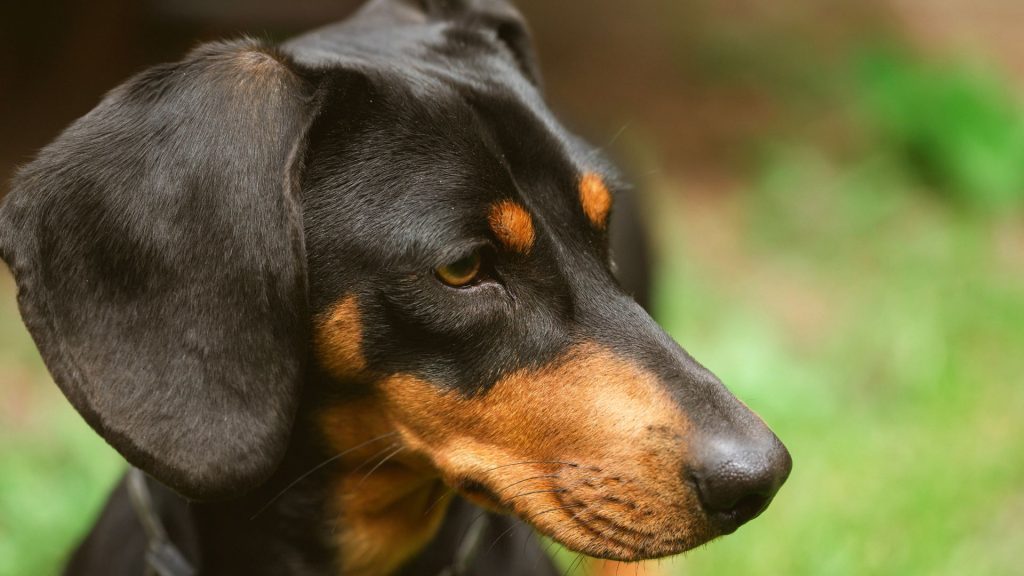
Characteristics of Black and Brown Dog Breeds
Black and brown dog breeds are known for their striking and unique appearances. Their coats, combining rich black and deep brown shades, stand out and often require regular grooming to maintain their shine. These breeds exhibit various temperaments, from the friendly and outgoing Labrador Retriever to the protective Rottweiler. Despite size differences, ranging from small Dachshunds to large German Shepherds, many share a muscular build and athletic nature, making them ideal for active owners.
Benefits of Owning a Black and Brown Dog
Owning a black and brown dog brings numerous benefits. Their distinctive appearance often draws admiration, making your pet a standout. These dogs are typically very loyal, forming strong bonds with their owners and providing excellent companionship and protection. Their affectionate nature makes them great with children and other pets, making them ideal family dogs.
Additionally, their intelligence and trainability are significant advantages. These breeds excel in obedience training and quickly learn new commands, making them suitable for various roles, from family pets to service animals. Black and brown dogs are often healthy and robust, leading long, fulfilling lives with proper care. Regular exercise and a balanced diet help maintain their health and well-being. Black and brown dog breeds offer a blend of beauty, loyalty, and intelligence, enriching the lives of their owners.
Top Black and Brown Dog Breeds
Here are some of the top black and brown dog breeds you should consider. These breeds vary in size, temperament, and care needs, offering a wide range of options for potential dog owners:
Labrador Retriever
The Labrador Retriever originated in Newfoundland, Canada, in the 1700s. Originally called the St. John’s dog, these dogs were bred to help fishermen retrieve nets and catch fish that escaped from fishing lines. They were later brought to England, where they were refined into the breed we know today.
Physical Characteristics
Labrador Retrievers are medium to large-sized dogs. They have a strong, athletic build with a broad head and expressive eyes. Their short, dense coat is water-resistant, coming in three standard colors: black, yellow, and chocolate. Labradors have a distinctive “otter” tail, which is thick and strong, aiding in swimming.
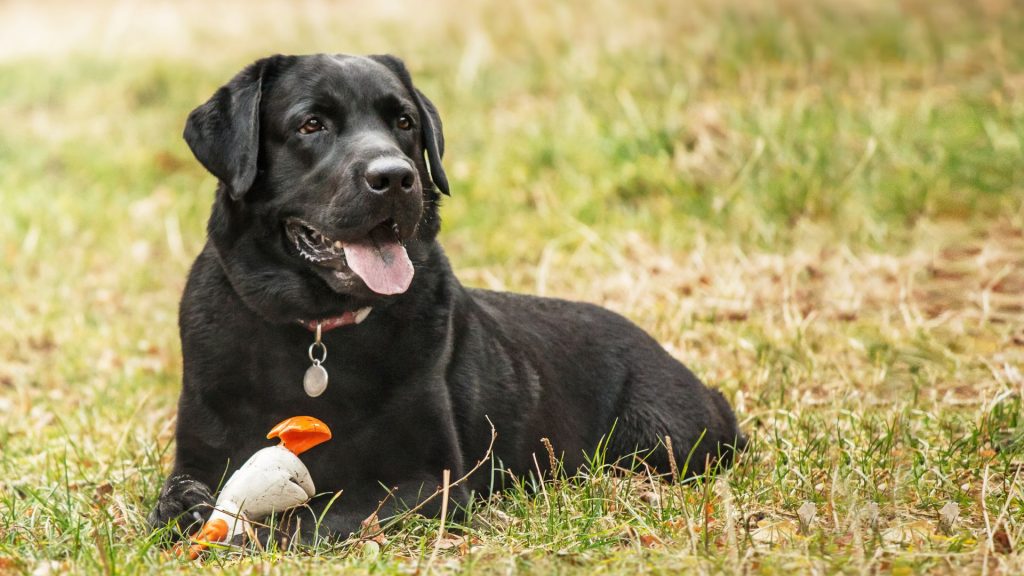
Temperament and Personality
Labrador Retrievers are known for their friendly and outgoing nature. They are highly social dogs, enjoying interaction with humans and other animals. Their intelligence and eagerness to please make them highly trainable. Labs are playful, gentle, and patient, making them excellent family pets. They are also known for their strong retrieving instincts, often seen carrying objects in their mouths.
Care and Grooming Needs
Labrador Retrievers require regular exercise to maintain their physical and mental health. Daily walks, playtime, and swimming are ideal activities. Their dense coat sheds year-round, with increased shedding during seasonal changes. Regular brushing helps manage shedding and keeps their coat healthy. Labs are prone to obesity, so a balanced diet and portion control are essential. Routine veterinary check-ups are necessary to monitor their overall health, especially for common issues like hip dysplasia and ear infections.
In summary, the Labrador Retriever is a versatile and loving breed, suitable for various roles from family pet to working dog. Their history, physical traits, and friendly personality make them a popular choice for dog owners worldwide.
Rottweiler
The Rottweiler’s origins trace back to the Roman Empire, where they were used as herding and guard dogs. These dogs accompanied Roman legions, protecting livestock and guarding camps. The breed was further developed in the German town of Rottweil, where they were known as “Rottweil butchers’ dogs” for their work driving cattle and pulling carts loaded with meat.
Physical Characteristics
Rottweilers are large, robust dogs with a powerful and muscular build. They have a broad head, strong jaws, and a confident expression. Their short, dense coat is typically black with clearly defined rust-colored markings on their face, chest, and legs. Rottweilers have a distinctive, docked tail, although some countries now prohibit docking.
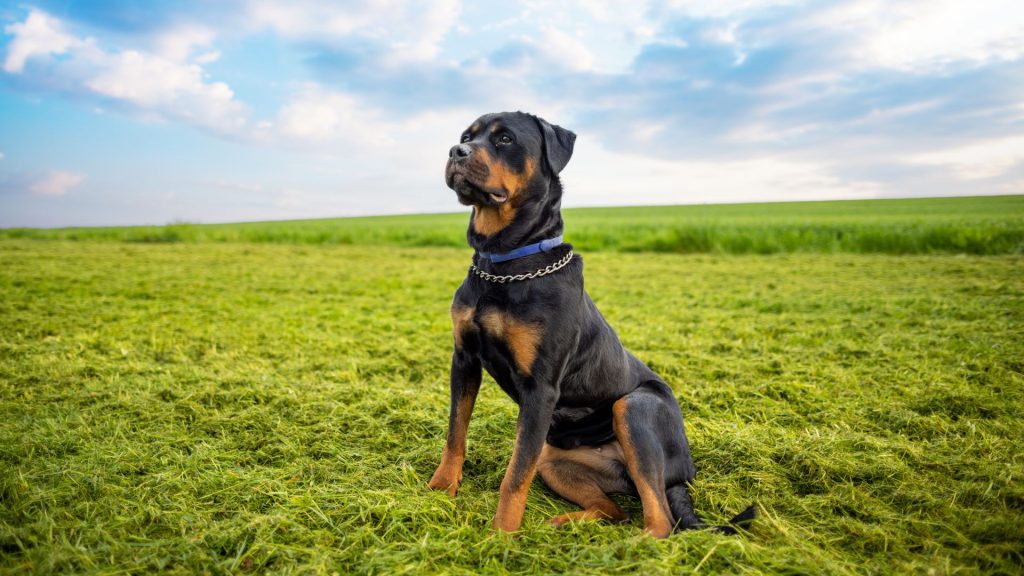
Temperament and Personality
Rottweilers are known for their confident, calm, and protective nature. They are loyal and devoted to their families, often forming strong bonds with their owners. Rottweilers are intelligent and trainable but require consistent and firm training from an early age. Their protective instincts make them excellent guard dogs, but they can also be gentle and affectionate with proper socialization. They are usually wary of strangers but friendly once they get to know them.
Care and Grooming Needs
Rottweilers require regular exercise to maintain their physical and mental well-being. Daily walks, playtime, and engaging activities like obedience training are essential. Their short coat is low-maintenance but benefits from weekly brushing to remove loose hair and keep the coat healthy. Rottweilers are prone to certain health issues, such as hip and elbow dysplasia, so regular veterinary check-ups are crucial. A balanced diet and portion control help prevent obesity, which can exacerbate joint problems.
The Rottweiler is a strong, loyal, and protective breed. Their rich history, impressive physical traits, and balanced temperament make them excellent companions for experienced dog owners who can provide proper training and care.
German Shepherd
The German Shepherd was developed in the late 19th century in Germany by Captain Max von Stephanitz. He aimed to create the perfect herding dog, combining intelligence, strength, and agility. The breed quickly gained popularity for its versatility and was used in various roles, including police and military work.
Physical Characteristics
German Shepherds are large, athletic dogs with a strong and muscular build. They have a distinctive appearance, with a slightly domed forehead, erect ears, and a bushy tail. Their coat is double-layered, consisting of a dense outer layer and a softer undercoat. Coat colors range from black and tan to sable, all black, or bi-color. German Shepherds are known for their graceful, fluid movement and powerful stride.
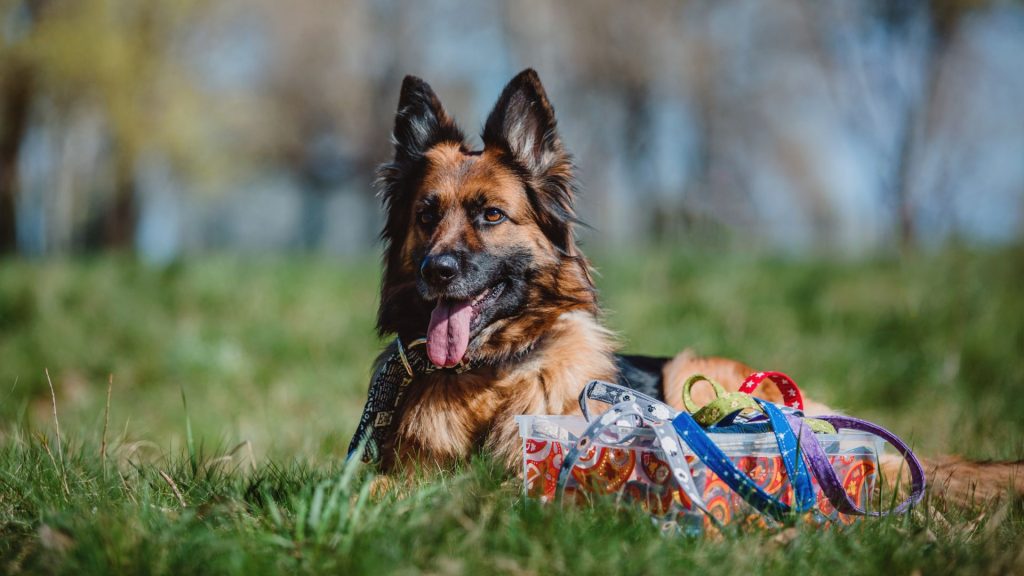
Temperament and Personality
German Shepherds are renowned for their intelligence, loyalty, and bravery. They are highly trainable and excel in obedience training, making them ideal for various roles, including service, search and rescue, and protection. German Shepherds form strong bonds with their families and are protective by nature. They are alert and watchful, often wary of strangers but affectionate with those they trust. Their high energy levels and work ethic require regular mental and physical stimulation.
Care and Grooming Needs
German Shepherds need plenty of exercise to stay healthy and happy. Daily activities like long walks, runs, and engaging games are essential. Their double coat sheds year-round, with increased shedding during seasonal changes, so regular brushing is necessary to manage loose hair. German Shepherds are prone to certain health issues, such as hip and elbow dysplasia and degenerative myelopathy, so regular veterinary check-ups are crucial. A balanced diet tailored to their activity level helps maintain their overall health.
In summary, the German Shepherd is a versatile and devoted breed. Their impressive physical traits, intelligence, and loyal nature make them excellent companions for active and dedicated dog owners who can provide the necessary training and care.
Doberman Pinscher
The Doberman Pinscher was developed in the late 19th century by Karl Friedrich Louis Dobermann, a tax collector in Germany. He wanted a loyal and protective companion to accompany him on his rounds. By crossbreeding several dog breeds, including the Rottweiler, German Pinscher, and Greyhound, he created the Doberman Pinscher. The breed quickly gained a reputation for its loyalty, intelligence, and guarding abilities.
Physical Characteristics
Doberman Pinschers are medium to large-sized dogs with a sleek, muscular build. They have a distinctive appearance with a narrow head, erect ears, and a docked tail. Their short coat is smooth and comes in various colors, including black, blue, red, and fawn, usually with rust markings on the chest, paws, and face. Dobermans are known for their elegant, athletic posture and powerful, graceful movement.

Temperament and Personality
Doberman Pinschers are known for their intelligence, loyalty, and protective nature. They are highly trainable and respond well to consistent, positive reinforcement training. Dobermans form strong bonds with their families and are often very affectionate and gentle with their owners. They are alert and vigilant, making them excellent watchdogs. While they can be wary of strangers, proper socialization from an early age helps them become well-rounded and confident dogs.
Care and Grooming Needs
Doberman Pinschers require regular exercise to stay physically and mentally stimulated. Daily activities such as long walks, runs, and play sessions are essential. Their short coat is low-maintenance, requiring only occasional brushing to remove loose hair and maintain its shine. Regular dental care, nail trimming, and ear cleaning are also important. Dobermans are prone to certain health issues, such as hip dysplasia and dilated cardiomyopathy, so regular veterinary check-ups are crucial. A balanced diet, appropriate for their age, size, and activity level, helps maintain their overall health.
The Doberman Pinscher is a loyal, intelligent, and protective breed. Their sleek physical traits, strong temperament, and devoted nature make them excellent companions for experienced dog owners who can provide the necessary training and care.
Beagle
The Beagle’s origins trace back to ancient Greece, but the breed as we know it was developed in England around the 1830s. Beagles were bred for hunting, particularly hare, due to their exceptional sense of smell and tracking abilities. They became popular among English hunters for their stamina and determination.
Physical Characteristics
Beagles are small to medium-sized dogs with a sturdy, compact build. They have a short, smooth coat that is easy to care for, typically found in tri-color (black, white, and brown) or bi-color variations. Beagles have large, expressive brown eyes and long, floppy ears that help funnel scents towards their nose. Their tails are carried high, often with a white tip, which helps hunters see them in tall grass.
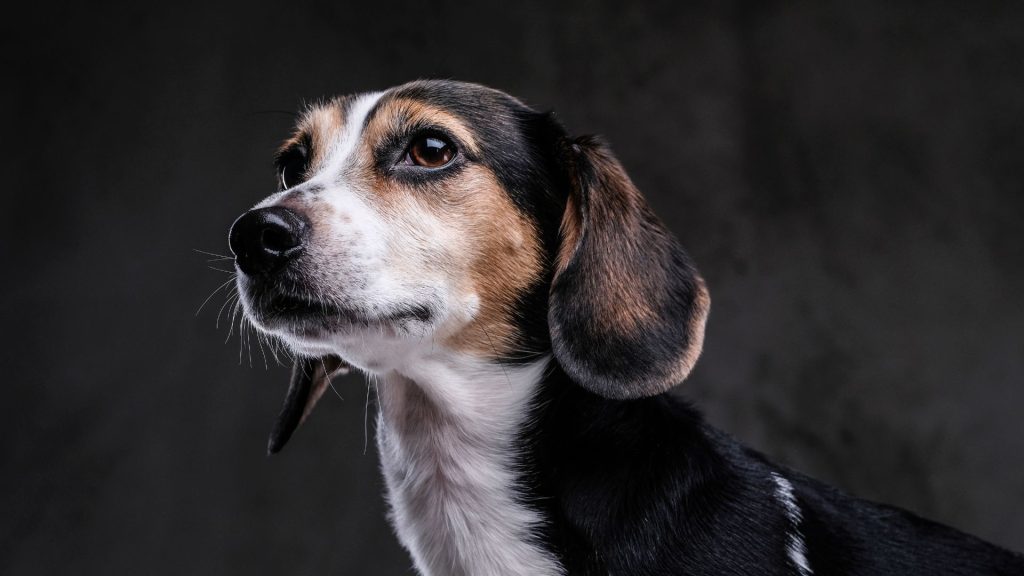
Temperament and Personality
Beagles are known for their friendly and curious nature. They are social dogs, enjoying the company of both humans and other animals. Beagles are intelligent and energetic, with a playful demeanor that makes them excellent family pets. Their strong hunting instincts mean they can be stubborn and independent, so consistent training is necessary. Beagles have a distinctive baying bark, which they use to communicate, especially when they pick up an interesting scent.
Care and Grooming Needs
Beagles require regular exercise to keep them healthy and prevent boredom. Daily walks, playtime, and mental stimulation are essential. Their short coat is low-maintenance, requiring only weekly brushing to remove loose hair and keep it shiny. Regular ear cleaning is crucial to prevent infections, as their long ears can trap moisture and dirt. Beagles are prone to certain health issues, such as hip dysplasia and epilepsy, so regular veterinary check-ups are important. A balanced diet and portion control are necessary to prevent obesity, which is common in the breed due to their love of food.
The Beagle is a friendly, curious, and energetic breed. Their compact size, distinctive appearance, and sociable nature make them wonderful companions for active families who can meet their exercise and care needs.
Dachshund
The Dachshund, often affectionately called the “wiener dog” due to its long body, originated in Germany in the 15th century. Bred for hunting badgers, these dogs were developed to be fearless and efficient underground hunters. The name “Dachshund” literally translates to “badger dog” in German. Over time, they were refined into three coat varieties: smooth, long-haired, and wire-haired.
Physical Characteristics
Dachshunds are small, elongated dogs with short legs and a distinctive body shape. Their long, muscular bodies are built for digging and maneuvering in burrows. The breed comes in various colors, including black and tan, red, chocolate, and more. Dachshunds have a confident stance with a deep chest and expressive eyes. Depending on the coat variety, their grooming needs can differ, with smooth coats being the easiest to maintain, and long-haired and wire-haired requiring more attention.
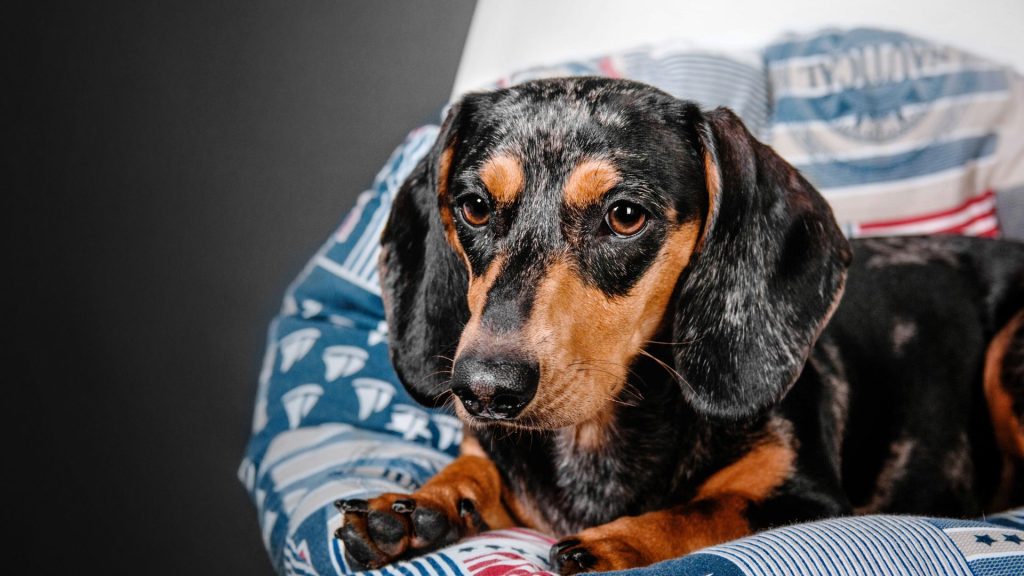
Temperament and Personality
Dachshunds are known for their lively and courageous nature. They are intelligent and can be quite independent, often displaying a stubborn streak. Despite their small size, they are bold and fearless, making them excellent watchdogs. Dachshunds are also affectionate and loyal to their families, forming strong bonds with their owners. They are playful and enjoy activities that engage their hunting instincts, like fetching and digging.
Care and Grooming Needs
Dachshunds require regular exercise to prevent obesity, which they are prone to due to their long bodies and short legs. Daily walks and playtime are essential. Their grooming needs vary by coat type: smooth-coated Dachshunds need minimal grooming, while long-haired and wire-haired varieties require regular brushing to prevent mats and tangles. Regular dental care, nail trimming, and ear cleaning are also important. Dachshunds are prone to certain health issues, such as intervertebral disc disease (IVDD), due to their long spine. Preventative care and avoiding activities that strain their back are crucial.
The Dachshund is a bold, intelligent, and affectionate breed. Their unique physical traits and lively personality make them delightful companions for owners who can provide the proper care and exercise.
Tips for Choosing the Right Dog Breed
Choosing the right dog breed is crucial and depends on several factors:
Factors to Consider
Lifestyle: Your activity level and daily routine are important. Active individuals might prefer high-energy breeds like Labrador Retrievers or German Shepherds. Sedentary lifestyles might suit less active breeds like Dachshunds.
Living Situation: The size of your home matters. Large breeds like Rottweilers need ample space and a yard, while smaller breeds like Beagles and Dachshunds adapt well to apartments but still need outdoor activity. Urban environments require adaptable breeds.
Family Dynamics: The makeup of your household influences your choice. Families with young children might prefer friendly breeds like Labrador Retrievers or Beagles. Protective breeds like Rottweilers and Doberman Pinschers are great for families seeking a guard dog, if well-socialized. Consider other pets at home too.
Matching Breed Traits to Owner Preferences and Needs
Identify what you want in a dog:
- Temperament: Do you want a calm or energetic dog? Beagles are friendly and outgoing, while Dobermans are loyal and protective.
- Grooming Needs: Some breeds need more grooming. Long-haired Dachshunds need regular brushing, while short-haired Rottweilers are low-maintenance.
- Trainability: For quick learners, consider intelligent breeds like German Shepherds. First-time owners might prefer easy-to-train breeds like Labrador Retrievers.
- Health Concerns: Research common health issues. Dachshunds are prone to back problems, while larger breeds may have joint issues.
By considering these factors, you can find the perfect canine companion that fits seamlessly into your life.
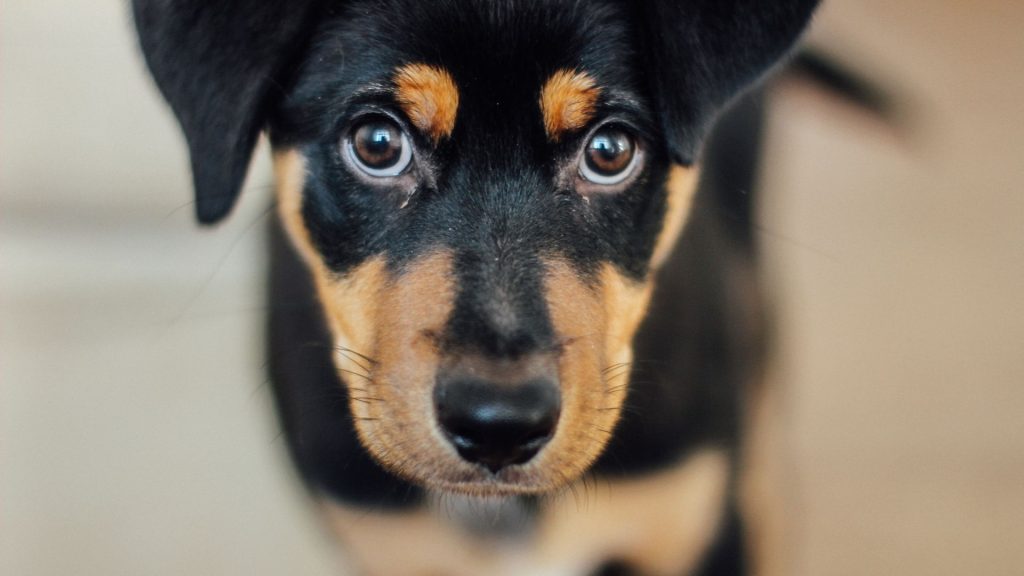
Caring for Black and Brown Dogs
Proper nutrition is vital for black and brown dogs. Choose high-quality dog food that matches their life stage (puppy, adult, senior). Balance proteins, fats, and carbohydrates. Watch portion sizes to prevent obesity, especially in breeds like Labrador Retrievers. Always provide fresh water.
Exercise Requirements
Regular exercise is essential for these breeds. Daily walks, playtime, and activities like fetch or agility training help maintain physical and mental health. High-energy breeds, such as German Shepherds and Rottweilers, need a mix of physical and mental activities to stay engaged and happy.
Grooming Tips and Tricks
Grooming needs vary by breed and coat type. Weekly brushing helps manage shedding and keeps coats healthy. Short-haired breeds like Beagles need less frequent grooming, while long-haired breeds like Dachshunds require more attention to prevent tangles. Bathing should be done every 4-6 weeks using dog-specific shampoo. Regular ear cleaning, nail trimming, and dental care are essential.
Health Considerations and Common Issues
Be aware of breed-specific health issues. Labrador Retrievers and German Shepherds are prone to joint problems like hip dysplasia. Regular vet check-ups are crucial for early detection and management. Maintain a vaccination schedule, practice parasite prevention, and ensure good dental care. Stay informed about common health issues and work with your vet to keep your dog healthy.
Caring for black and brown dogs involves balanced nutrition, regular exercise, proper grooming, and proactive health care. Meeting these needs ensures a happy, healthy, and well-adjusted pet.
Conclusion
Black and brown dog breeds offer a unique blend of beauty, loyalty, and intelligence. We’ve discussed their general traits, specific breed characteristics, and care needs. These dogs make excellent companions, fitting various lifestyles and family dynamics. If you’re considering a new pet, black and brown breeds deserve your attention. Their striking appearance and affectionate nature bring immense joy and fulfillment to their owners. Embrace the opportunity to welcome one of these wonderful dogs into your home and experience the unparalleled bond they offer.

Hello, I’m Donna Carter, the founder and writer behind PetFleck.com. My journey with dogs started years ago, and it’s been a passion that has only grown stronger over time. I’ve always been fascinated by the unique behaviors and characteristics of different dog breeds, and this curiosity has led me to dive deep into the world of canine studies.
My love for dogs is the driving force behind everything I do. I’ve dedicated countless hours to researching and understanding the nuances of dog care, training, and breed-specific traits. This dedication helps me create content that is not only informative but also genuinely helpful for fellow dog lovers and owners.
At PetFleck, I combine my extensive knowledge and hands-on experience with my passion for dogs to provide valuable insights and tips. Whether it’s exploring different breeds or offering practical advice on dog care, I aim to share knowledge that makes a real difference in the lives of dogs and their families.
I’m thrilled to share my love for dogs with you through my writing. I hope my articles inspire and inform, helping you to better understand and appreciate the incredible bond we share with our furry friends.
Thank you for visiting PetFleck.com, and I look forward to connecting with you through our shared love of dogs!
